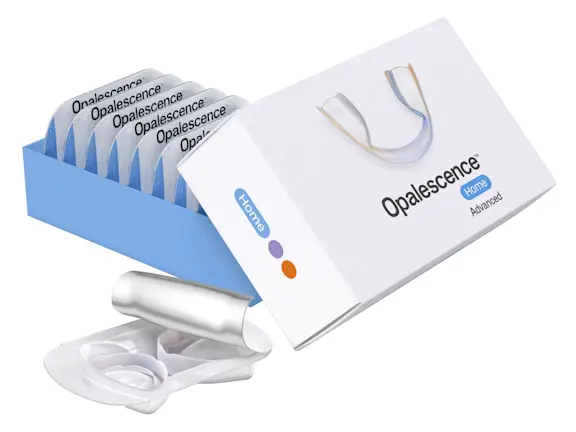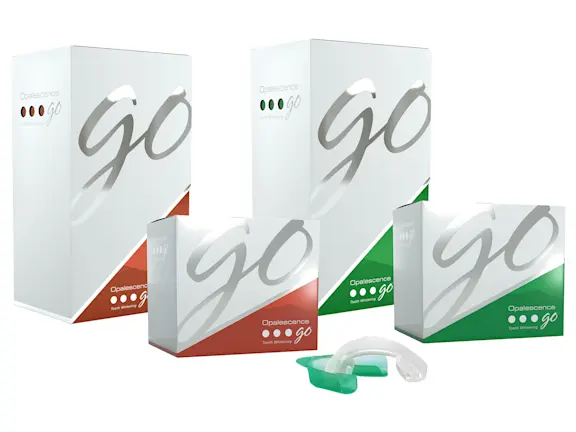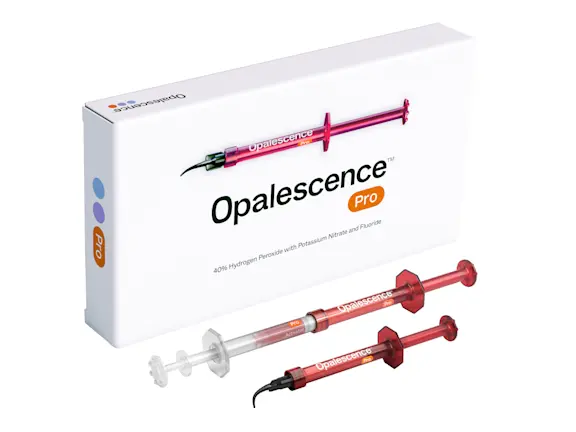Approaching Dental Patients About Teeth Whitening: Avoiding Embarrassment
Tuesday, September 16, 2025
We all know a brighter, whiter smile can significantly enhance a patient’s confidence. However, discussing teeth whitening with patients can be sensitive, as it may inadvertently cause embarrassment. This article aims to provide dental professionals with strategies to approach the topic of teeth whitening in a way that is respectful and considerate, ensuring patients do not feel they need to whiten their teeth to have a great smile.
Understanding Patient Emotional Readiness
Before discussing teeth whitening, it’s crucial to understand that patients may have varying levels of emotional sensitivity about their dental appearance. Factors such as past experiences, self-esteem, and cultural perceptions can influence how a patient feels about their teeth. Dental professionals should be mindful of these factors and approach the topic with empathy and tact, avoiding any implication that the patient requires a whitening treatment.
Strategies for Approaching the Topic
The good news is you’re probably already using some of these strategies in your dental office. Read through some of our clinical team-approved methods for approaching patients without causing any awkward situations.
Use Visual Aids
- Placement of Flyers: Place product flyers in the treatment room, next to the dental chair, where patients can easily see them. This passive approach allows patients to express interest without feeling singled out or pressured. Flyers can include before and after photos, benefits of teeth whitening, and information about the products used.
- Digital Displays: Utilize digital displays in the waiting area or treatment rooms to showcase teeth whitening options. This can subtly introduce the topic to patients and pique their interest without making them feel targeted.
Intake Forms
If your office is looking for a passive way to approach teeth whitening with your patients, consider adding it to your patient intake forms. This could be a great way to see if new patients have ever heard of teeth whitening, have ever gone through a whitening treatment, and if they’re interested in learning more.
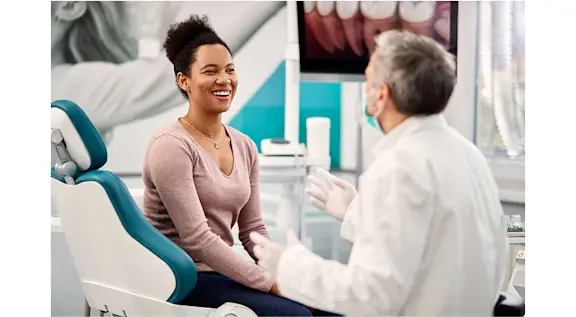
Normalize the Conversation
“Whitening is one of those topics that I can bring up with my patients without worrying I'll offend them. It’s all about the approach. When I approach the topic with consideration of their needs and an open mind, my patients typically say yes.”
Crystal Martinez Barnes, RDH
- Routine Inquiry: Boldly ask every patient if they’re interested in teeth whitening, explaining that you ask all of your patients. This normalizes the conversation and reduces the stigma associated with the procedure. Phrases like “We offer teeth whitening to all our patients as part of our comprehensive care” can make the inquiry feel routine and nonjudgmental, ensuring patients do not feel they are being singled out.
- Inclusive Language: Use inclusive language that makes patients feel comfortable. For example, “Many of our patients have found teeth whitening to be a great way to enhance their smile.”
Establish Trust
- Open Communication: Be open and friendly with patients to establish trust. When patients feel comfortable with their dental professional, they are more likely to engage in conversations about cosmetic procedures. Share your own experiences or success stories from other patients to build rapport, ensuring patients feel supported rather than judged.
“Before any whitening treatment, I sit down with the patient and talk through all of the outcome possibilities: what can happen, what can’t happen, etc. I think it’s a good way to build trust with my patients, and they really seem to like that.”
Dr. Caroline Miyasaki

- Active Listening: Practice active listening to understand patient concerns and preferences. This involves:
- Paying Full Attention: Focus entirely on the patient when they are speaking, avoiding distractions.
- Showing Empathy: Acknowledge their feelings and concerns with phrases like “I understand how you feel”, or “That sounds challenging”.
- Reflecting and Clarifying: Repeat back what the patient has said to confirm understanding, such as “So you’re concerned about tooth sensitivity, is that correct?”
- Asking Open-Ended Questions: Encourage patients to share more about their thoughts and feelings with questions like “Can you tell me more about your experience with teeth sensitivity?”
Educate Patients
- Benefits of Teeth Whitening: Provide information about the benefits and process of teeth whitening. Educated patients are more likely to make informed decisions and feel less embarrassed about seeking treatment. Highlight benefits such as improved self-esteem, enhanced appearance, and a more youthful look, ensuring patients understand the positive aspects without feeling pressured.
- Detailed Explanations: Offer detailed explanations about the teeth whitening process, including what to expect during and after the procedure. Make sure to mention that crowns and veneers cannot be whitened, and endodontically treated and traumatized dark teeth require a different treatment than the rest of their teeth. This can alleviate any fears or misconceptions patients may have, ensuring they feel informed rather than pressured.
Address Teeth Sensitivity First
- Desensitizing Products: If a patient struggles with tooth sensitivity, recommend the use of Ultradent desensitizing products first. UltraEZ™ desensitizing gel used in custom trays, UltraEZ prefilled trays, or Opalescence™ Whitening Toothpaste Sensitivity Relief are all excellent options UltraEZ desensitizing gel contains an optimum amount of potassium nitrate. Findings have confirmed that the potassium nitrate helps to minimize sensitivity.1 Explain how these products work and their benefits in reducing sensitivity, ensuring patients feel cared for rather than pressured.
- Personalized Care: Tailor your approach based on the patient’s dental history. For example, “Given your sensitivity, we can start with desensitizing treatments before moving on to whitening. That way, we can make sure you’re comfortable.”
“In Brazil, we have the Opalescence™ Whitening Toothpaste for sensitivity now. And one thing they’re doing a lot now is giving patients the toothpaste to use for about fifteen days before their whitening treatment. That way, we can offer a different approach to their whitening experience while avoiding sensitivity as much as possible.”
Dr. Caroline Miyasaki
Offer Personalized Recommendations
-
Tailored Advice: Tailor your recommendations based on the patient’s dental history and preferences. Personalized care demonstrates that you are attentive to their unique needs. For example, “Based on your dental history, I recommend this specific whitening treatment. And here’s why…"
For patients with special circumstances such as tooth sensitivity, we can use other products to help mitigate that on the front end to help build their confidence in us, the product, and themselves. Similarly, patients with exposed dentin from grinding their teeth would benefit from a dentin sealing treatment before whitening. Tailoring their treatment plan can build trust between you and your patient.
- Follow-Up Plans: Create follow-up plans to monitor the patient’s progress and address any concerns they may have. This ongoing support can make patients feel more comfortable with the decision to undergo teeth whitening.
Visual Demonstrations
- Tooth Shade Guide: Use a tooth shade chart to show patients their shade before and after treatment. Notate their starting shade and show them how much improvement they’ve made on their follow-up treatment. This visual demonstration can encourage return whitening patients by providing tangible evidence of their progress, ensuring they feel motivated throughout the whitening treatment process.
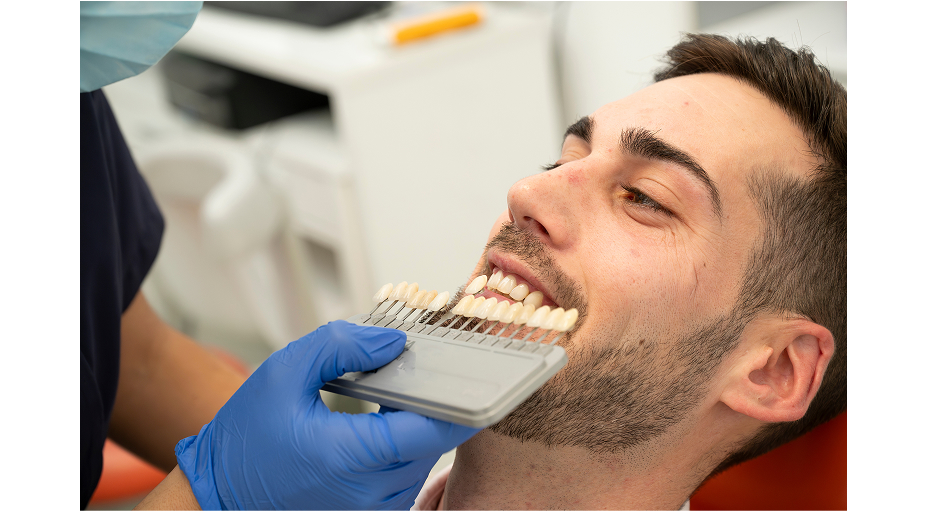
“Often, it’s harder for patients to see their whitening results because they see their teeth every day. If I have a teeth whitening patient come in for a follow-up and they’re discouraged or frustrated that their treatment wasn’t as successful as they wanted, I bring out a shade guide. Since we notated their starting shade at the beginning, we can show them the progress they have made and give them a visual. This is a great time to make changes with the whitening treatment and customize to their needs. They get a sense of relief, and I have a lot of success with patients that way.”
Additional Benefits of a Brighter, Whiter Smile
A brighter, whiter smile offers several higher-order benefits that dental professionals can convey to their patients. The trick is explaining these important benefits without any pressure:
- Enhanced Self-Esteem: Enhancing your smile can elevate your self-confidence and uplift your mood and mindset.2
- Youthful Look: A brighter smile can give you a vibrant, youthful appearance.3
- Reduced Stress: Smiling can lower your heart rate and speed cardiovascular recovery during stressful situations.4
Conveying Higher-Order Benefits to Patients
Explaining the higher-order benefits of teeth whitening can help avoid embarrassment by shifting the focus from the need for cosmetic improvement to the positive outcomes of the procedure. Dental professionals can effectively convey these benefits by:
- Highlighting Success Stories: Share success stories and testimonials from other patients who have experienced the positive effects of teeth whitening. This approach emphasizes the benefits rather than the need for treatment.
- Visual Demonstrations: Use visual aids, such as before and after photos, to demonstrate the transformative effects of teeth whitening. This helps patients see the potential results and get excited to undergo the procedure.
- Positive Reinforcement: Reinforce the benefits during consultations and follow-up appointments, emphasizing how teeth whitening can improve overall quality of life. This approach focuses on the positive impact rather than implying a deficiency that needs correction.
Conclusion
Approaching the topic of teeth whitening with consideration and respect can help dental professionals foster a positive and trusting relationship with their patients. By using these strategies and highlighting the higher-order benefits of a brighter, whiter smile, you can ensure that your patients feel comfortable and confident in discussing their dental care options without feeling pressured or embarrassed.
- Mahesuti A, Duan YL, Wang G, Cheng XR, Matis BA. Short-term Efficacy of Agents Containing KNO3 or CPP-ACP in Treatment of Dentin Hypersensitivity. Chin J Dent Res. 2014;17(1):43-47.
- Pavicic DK, Kolceg M, Lajnert V, Pavlic A, Brumini M, Spalj S. Changes in quality of life induced by tooth whitening are moderated by perfectionism: A randomized, double-blind, placebo-controlled trial. Int J Prosthodont. 2018;31(4):394–396. doi: 10.11607/ijp.549
- Newton JT, Subramanian SS, Westland S, Gupta AK, Luo W, Joiner A. The impact of tooth colour on the perceptions of age and social judgements. J Dent. 2021;112. doi:10.1016/j.jdent.2021.103771
- Cross MP, Acevedo AM, Leger KA, Pressman SD. How and why could smiling influence physical health? A conceptual review. Health Psychol Rev. 2023;17(2):321-343. doi:10.1080/17437199.2022.2052740

By Casey Fenich
As the Global SEO Manager at Ultradent, Casey combines over a decade of digital marketing expertise with a passion for storytelling. By day, Casey spearheads global SEO strategies, and by night, engages in self-publishing, crafting captivating narratives for diverse audiences.
